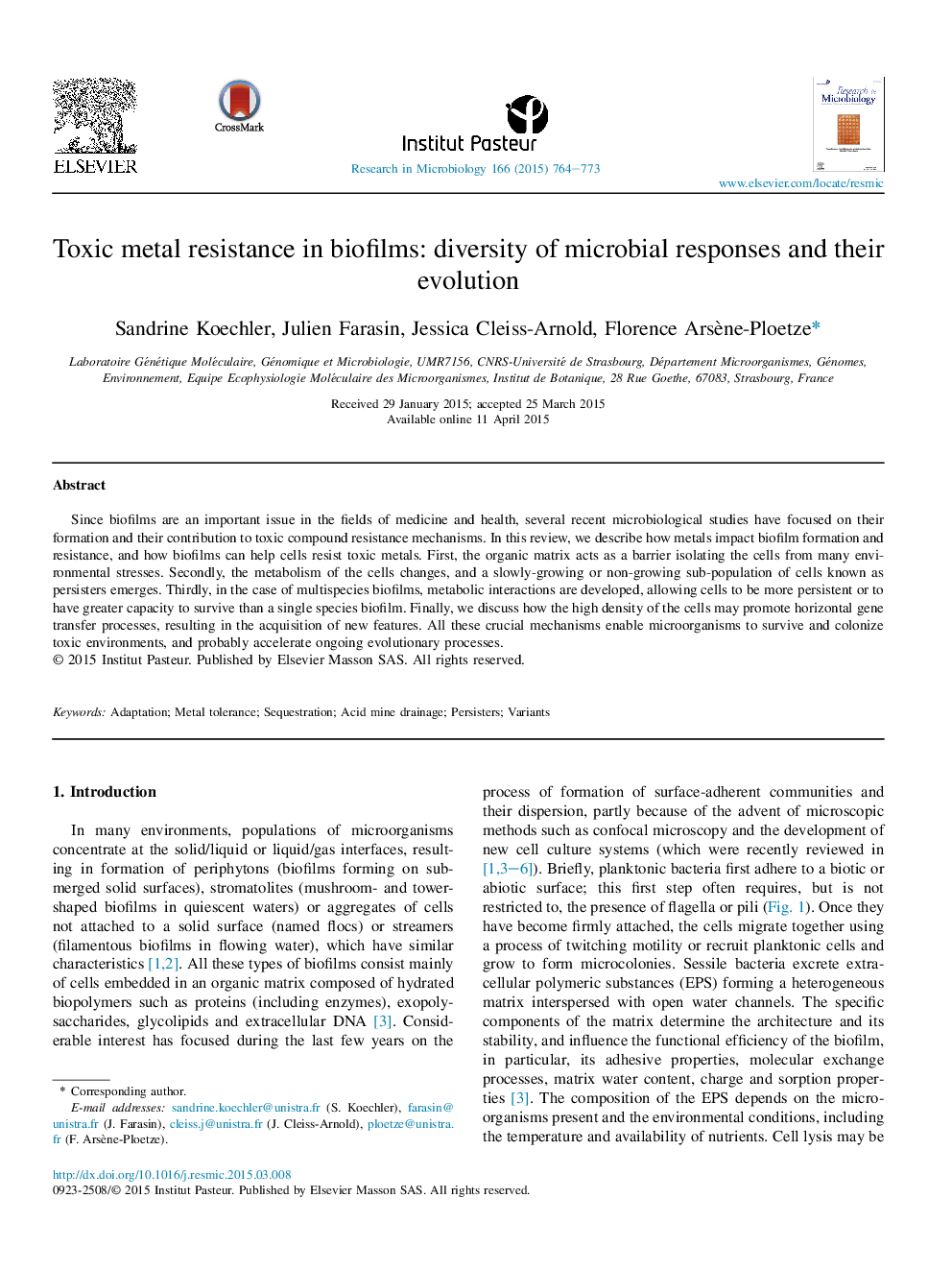| Article ID | Journal | Published Year | Pages | File Type |
|---|---|---|---|---|
| 4358375 | Research in Microbiology | 2015 | 10 Pages |
Since biofilms are an important issue in the fields of medicine and health, several recent microbiological studies have focused on their formation and their contribution to toxic compound resistance mechanisms. In this review, we describe how metals impact biofilm formation and resistance, and how biofilms can help cells resist toxic metals. First, the organic matrix acts as a barrier isolating the cells from many environmental stresses. Secondly, the metabolism of the cells changes, and a slowly-growing or non-growing sub-population of cells known as persisters emerges. Thirdly, in the case of multispecies biofilms, metabolic interactions are developed, allowing cells to be more persistent or to have greater capacity to survive than a single species biofilm. Finally, we discuss how the high density of the cells may promote horizontal gene transfer processes, resulting in the acquisition of new features. All these crucial mechanisms enable microorganisms to survive and colonize toxic environments, and probably accelerate ongoing evolutionary processes.
